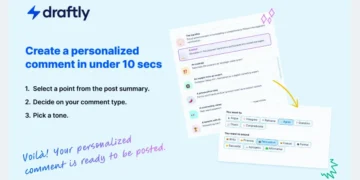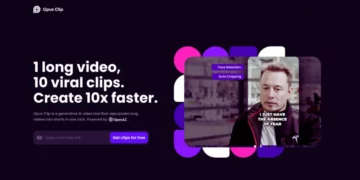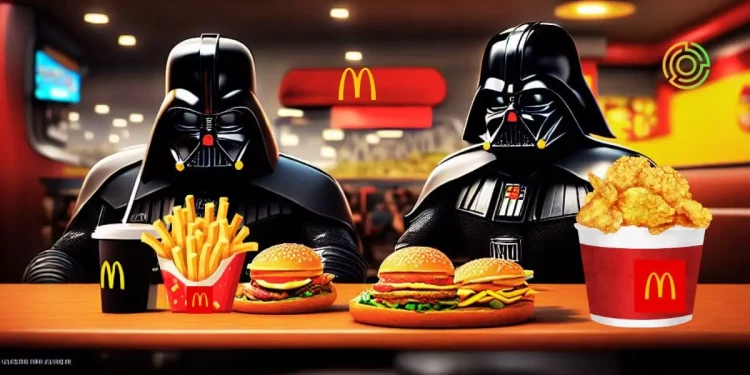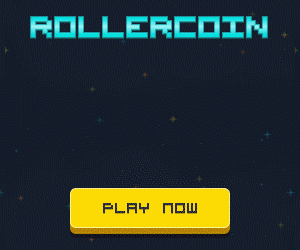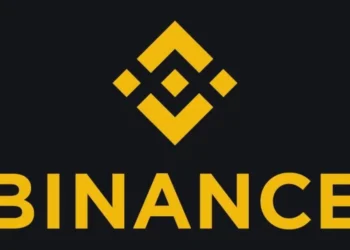As a household name and pillar of American fast food, McDonald’s needs little introduction. Yet even global giants must continue evolving their marketing as technology progresses. Recently, McDonald’s has begun strategically exploring opportunities within metaverse and web3 spaces as the next frontier for brands.
While early, the company’s nascent forays into virtual worlds provide valuable insights into how traditional corporations can leverage these emerging channels. As a copywriting expert, I analyze how brands like McDonald’s are cautiously entering the metaverse ecosystem while trying to engage digitally native audiences.
Early Metaverse Brand Experiments
In 2021, McDonald’s made its first move into blockchain-based virtual worlds through a small promotion in the Cryptovoxels metaverse. Visitors could access a pixelated McDonald’s “airdrop” shop providing free virtual Big Macs and fries as NFTs.
While functionally pointless, it allowed testing brand presence in a virtual space, studying community reaction and trends, and interacting with the nascent metaverse demographic.
McDonald’s also collaborated with streetwear label HYPE to auction NFTs of virtual Big Mac onesies and restaurant art, donating proceeds to charity. The stunt generated PR buzz while demonstrating digital collectible potential.
Engaging Younger Demographics Where They Are
A driving motivation for brands entering the metaverse is engaging younger demographics, especially Gen Z, where they already spend significant time gaming and socializing online. As more activity shifts to virtual worlds, McDonald’s cannot ignore these spaces.
Promotions like virtual merchandise or items in metaverse games provide touchpoints matching how young consumers socialize and express identity digitally. With its massive youth appeal, McDonald’s is smart to explore avenues like digital collectibles and virtual branded activations.
Extending its presence to metaverse gathering spots frequented by youth offers passive brand building simply by existing in the same environments. While McDonald’s brand remains strong, maintaining share of culture with younger generations necessitates adapting.
McDonald’s Restricted Virtual Real Estate
In 2022, McDonald’s made its biggest stride into the metaverse by purchasing virtual land within major blockchain-based world The Sandbox. It acquired a virtual property in the game’s Hub district, modeled after a city center.
McDonald’s joins over 300 established brands who have bought virtual Sandbox plots, including Adidas, Gucci, and Atari. This provides an owned digital space to host virtual experiences, gameplay, or promotions.
However, McDonald’s intentions for its plot remain ambiguous. The company offered limited comment on plans for the virtual property, taking a wait-and-see approach as the metaverse develops.
Cautious Approach Reflects Prudence
McDonald’s measured entry into spaces like The Sandbox highlights a cautious sentiment common among traditional brands regarding full metaverse commitment.
Despite hype, brands continue evaluating which elements of web3 engagement resonate with consumers rather than diving headlong into the space. They also must balance innovation with brand safety.
McDonald’s public experiments have focused on low-risk digital collectibles and virtual real estate rather than ambitious activations. While prudence slows progress, it enables learning before dedicating major resources.
Web3 Open New Avenues of Dynamic Engagement
Ultimately, McDonald’s metaverse and web3 engagements remain highly limited in scope. However, they offer glimpses into the potential for brands to leverage new technologies for marketing.
Virtual real estate creates digital destinations for consumers to actively engage with brands, integrated into environments where they already spend time. Dynamic NFTs make experiential promotions and digital merchandise possible.
Applied thoughtfully, these web3 capabilities can transform passive marketing into results-driven, community-anchored brand interactions within virtual worlds reflecting the physical one.
The Future Remains Uncertain
McDonald’s cautious steps into the metaverse leave ample uncertainty around its future plans and scale of investment. The experiments provide option value to ramp up or down engagement based on consumer reaction.
The company stated it will continue listening to its communities and evaluating how virtual experiences can enhance connections with its brand. While unlikely to go “all in” soon, McDonald’s is laying the groundwork to rapidly respond once metaverse opportunities crystallize.
McDonald’s Ventures Into the Metaverse – From Virtual Restaurants to Trademark Battles
The golden arches of McDonald’s have become visible across virtual worlds, as the fast food giant explores marketing opportunities within metaverse platforms like Roblox and The Sandbox. However, McDonald’s is also moving aggressively to trademark its brand in the metaverse to fend off infringement.
As a web3 copywriter, I analyze McDonald’s early metaverse initiatives along with the legal implications of extending its intellectual property into these emerging spaces. McDonald’s faces challenges balancing open creation with enforcing branding rights.
Virtual McDonald’s Locations See Millions of Visits
In late 2021, McDonald’s launched a virtual restaurant and mini-games experience on the massively popular Roblox gaming platform. It proved wildly successful, attracting over 30 million visits from eager users.
The realistic McDonald’s locale let users take fake orders, make virtual food deliveries, and earn in-game currency. Providing a branded digital experience resonated with Roblox’s young demographic who’ve grown up with the chain.
McDonald’s also purchased virtual land in The Sandbox metaverse, laying the foundation for future activations. These early promotions provide valuable consumer data while increasing brand familiarity.
Preemptively Asserting Trademark Rights in the Metaverse
In tandem with its virtual initiatives, McDonald’s has taken extensive legal steps to protect and enforce its intellectual property within emerging metaverse spaces. This covers trademarks on its name, logo, menu items, and overall brand identity.
McDonald’s filed 10 separate trademark applications clearly staking claim to key branding assets across platforms like The Sandbox, Cryptovoxels, Decentraland and others.
The move aims to deter other users from creating anything infringing or diluting McDonald’s signature intellectual property within these decentralized virtual worlds.
Challenges Policing IP in User-Generated Metaverse Worlds
However, McDonald’s faces challenges asserting legal control over its marks in open metaverse environments built on user creation. Platforms like The Sandbox encourage users freely incorporating known brands into virtual experiences.
While McDonald’s can petition for removing infringing content, the sheer volume across countless metaverse worlds makes comprehensive enforcement impractical. Plus, McDonald’s risks PR backlash cracking down on user creativity in communal spaces.
Moderating IP in user-driven metaverse economies requires a nuanced approach balancing branding control with flexibility around fan engagement. The dynamic also creates headaches for metaverse platforms balancing both interests.
Focusing on Clear Instances of Bad Faith Infringement
For manageable enforcement, McDonald’s will likely target only clear-cut, intentionally deceptive IP theft – like someone selling “McDonald’s” branded goods without authorization or falsely implying endorsement.
Going after everyday users incorporating McDonald’s icons into virtual experiences risks being seen as a bully while having minimal bottom line impact. McDonald’s seems cognizant of avoiding this perception.
The company states it “does not object to nominative and fair uses of our trademarks by others.” Distinguishing between good faith creativity and intentional counterfeiting or fraud will define brand strategy.
Evolving Standards Around Virtual IP and Brand Usage
McDonald’s trademark conundrum illustrates the larger need for evolving standards around intellectual property usage in metaverse environments. What constitutes criminal counterfeiting versus allowable creative liberties lacks codified definition.
Until clear frameworks get established either legally or through platform governance, aggressive trademark enforcement seems poised to generate backlash. But ignoring infringement completely also jeopardizes brand integrity.
For iconic brands like McDonald’s, balancing these complex dynamics in good faith will shape public reception. Both trademark holders and platforms must collaborate to find workable compromises accommodating all interests.
McDonald’s and its recent experience in the Roblox Metaverse
Global fast food leader McDonald’s continues evolving its marketing by diving into metaverse experiences. The company recently launched McDonald’s Land on the massively popular Roblox gaming platform, providing young fans a branded virtual hangout.
The McDonald’s Land promotion demonstrates how major brands are recognizing opportunities in social metaverse environments like Roblox. By meeting audiences in these new digital spaces, McDonald’s aims to maintain cultural relevance with digitally native generations.
Immersive Islands Tailored to Younger Demographics
McDonald’s Land consists of five virtual islands each inspired by core brand themes – hamburgers, fries, ice cream cones, soda, and the golden arches logo itself. Players can explore the islands and earn rewards by participating in themed mini-games.
This experiential activation caters directly to Roblox’s youthful user base, which skews under 16. The interactive islands allow McDonald’s to engage consumers where they already spend time socially online.
Since launching on July 25th, McDonald’s Land attracted over 55,000 eager visitors in its first month. The promotion achieved impressive organic reach by meshing with existing social behaviors on Roblox.
Rewards System Drives Engagement and Brand Connection
A key incentive driving visitors is the ability to earn digital currency within Roblox through McDonald’s Land mini-games. Players can then exchange their winnings for exclusive virtual brand merchandise.
This rewards-based structure gamifies the experience, encouraging repeat visits and social sharing to unlock virtual skins and status. Direct brand interactivity aims to build positive associations starting early with young consumers.
McDonald’s integration of achievements and collectibles illustrates forward-thinking digital marketing strategy tailored for new virtual spaces.
Recreating the Social Mall Experience Digitally
Industry experts have compared Roblox’s appeal as today’s equivalent of shopping malls for older Millennial and Gen X generations. Both facilitate socializing, exploring, playing, and expressing identity through fashion.
McDonald’s Land essentially reconstitutes key brand touchpoints like retail design, merchandising and recreation within a popular virtual mall. Recreating these experiential brand elements online provides scalable digital engagement.
As physical and virtual blend through platforms like Roblox, McDonald’s is wisely adapting its signature in-real-life activations to resonate in new digital environments.
Proactive Response to Changing Consumer Landscape
McDonald’s progressive push into digital experiences acknowledges the rapidly evolving habits of young consumers. Activities like socializing or shopping are accelerating their shift online.
Brands that wait to explore marketing opportunities in emerging virtual worlds risk losing touch with tomorrow’s buyers immersed in digital-first lifestyles.
By pioneerng a presence on Roblox, McDonald’s gains valuable first-mover advantage in engaging metaverse users. The company can apply insights to iterate future experiences as the space matures.
Preserving Cultural Relevance in the Digital Age
More broadly, McDonald’s metaverse activation reflects its long-running strength in evolving marketing to maintain cultural relevance across generations.
From drive-ins to PlayPlaces to mobile apps, McDonald’s has repeatedly adapted its brand connection points to changing consumer landscapes. Entering virtual worlds like Roblox continues this legacy.
As new technologies reshape how young audiences socialize and even what constitutes “social space,” McDonald’s is staying steps ahead. McDonald’s Land signals the golden arches will continue inhabiting the forefront of current and future consumer behavior.
Get the ultimate guide for understanding the metaverse and its importance CLICK HERE!
Conclusion
McDonald’s strategic but limited forays into metaverse marketing demonstrate a common hesitance among established brands to fully commit to web3. Yet its virtual merchandise auctions, metaverse real estate acquisition and presence in blockchain-based worlds reflect a desire to engage digitally native generations on their terms.
Blending physical and virtual connections could profoundly expand McDonald’s already rich storytelling and community building. But until promising applications emerge from the hype, the brand seems content making safe bets, poised to capture web3’s benefits at scale when the time is right. McDonald’s approach provides a pragmatic model for marketing in uncertain revolutionary times.
McDonald’s is still formulating its identity and presence across the open, user-driven frontiers of the metaverse. From viral virtual restaurants to preemptive trademark filings, the company is taking deliberate steps while gauging consumer reception.
Enforcing branding rights poses challenges in decentralized spaces built on participation. McDonald’s willingness to embrace certain non-commercial uses of its IP in the metaverse will be tested. The chain’s legacy looms large over balancing control with crowd creativity.
FAQs
What has McDonald’s done in the metaverse so far?
Its activities have been limited but include purchasing virtual land in The Sandbox, partnering to auction NFTs, and giving away free virtual products in Cryptovoxels.
Why are traditional brands cautious about the metaverse?
The space remains highly speculative, with unclear ROI on investments. Brands want to balance innovation with prudence until strong use cases and consumer adoption arise.
What metaverse opportunities suit brands like McDonald’s?
Digital merchandise/collectibles, virtual events and activations, and owned social spaces appear promising for brand engagement, subject to responsible execution.
How can metaverse marketing drive value?
Experiential digital promotion and virtual branded destinations offer new channels for organic community engagement beyond passive advertising.
Will brands build their own metaverse worlds?
Potentially in the future, but current experiments focus on partner platforms with existing scale rather than fully custom standalone worlds.
What virtual McDonald’s locations exist today?
McDonald’s has a popular virtual restaurant in the Roblox gaming metaverse. It also bought branded virtual land in The Sandbox but has yet to develop it.
Why did McDonald’s file metaverse trademark applications?
To get ahead of asserting ownership of its name, logo, and other intellectual property across major metaverse platforms as they grow. This may deter brand misuse.
What IP risks does McDonald’s face in metaverses?
User-generated worlds like The Sandbox encourage open creation, making comprehensive trademark enforcement challenging. McDonald’s must avoid seeming heavy-handed.
How can McDonald’s balance IP protection and creativity?
Focus enforcement only on clearly intentional, bad faith infringement. Allow non-commercial fan usages that don’t directly counterfeit or denigrate the McDonald’s brand.
Will trademark disputes increase as brands enter metaverses?
Almost certainly. Resolving clashing IP rights and expectations will require evolving legal frameworks and platform content policies around permitted brand usage in virtual worlds.
Follow us on our social networks and keep up to date with everything that happens in the Metaverse!
Twitter Linkedin Facebook Telegram Instagram Google News Amazon Store












